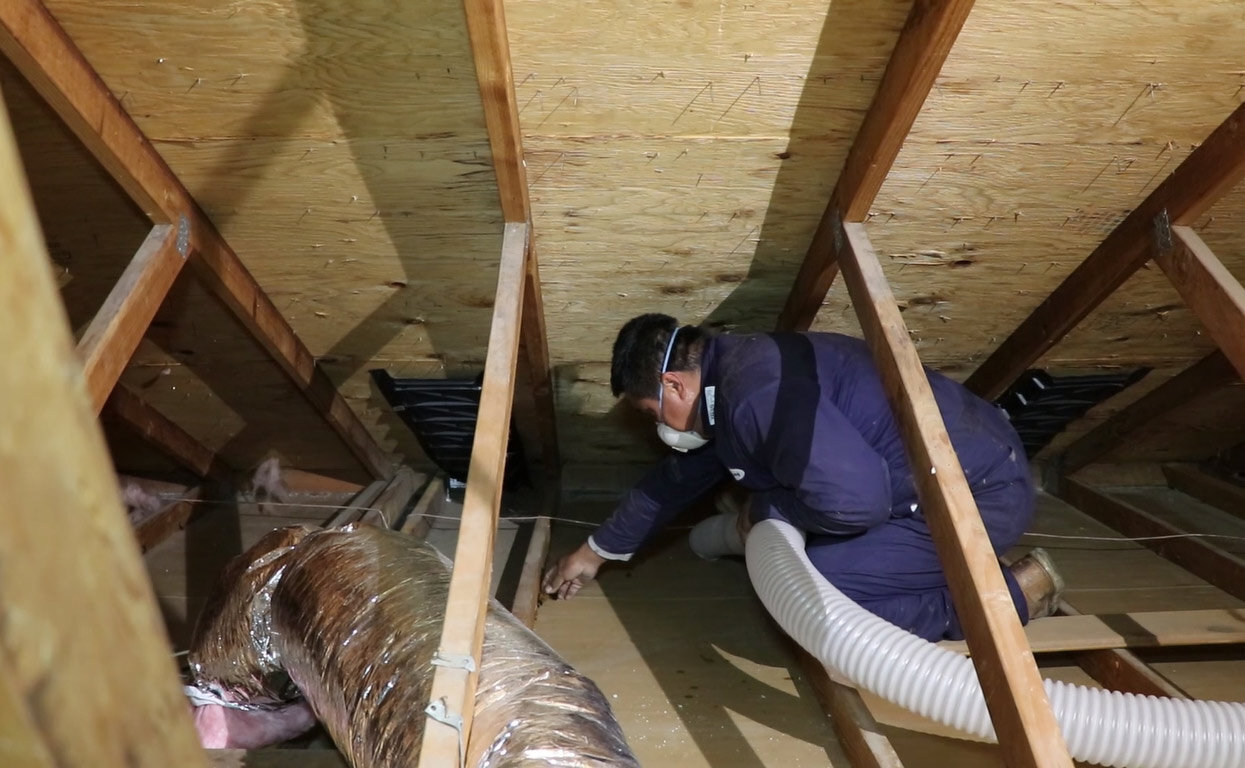Top 10 Signs Your Home in Under-Insulated
Home insulation
Your home should be your sanctuary where you feel comfortable and safe. Whether you are in the grip of a scorching summer or in the throes of a cold and inclement winter season, you would like to make sure that your house can regulate its temperature itself and maintain a pleasing and comfy temperature throughout the year.
However, if your home is always drafty, or your monthly energy bills are increasing with no other cause, you might have an under-insulated house and probably need better insulation. Under-insulation is more common in Southern California than you may think.
The good news is that it is easily preventable or fixable. You should know that home insulation plays a considerable role in the energy efficiency of your house, and you cannot ignore it. Insulation is the key to an energy-efficient and cozy home. Without sufficient or adequate insulation, you will likely pay a lot on your home heating and cooling bills. Read on to learn about the top 10 signs your home might be under-insulated.

What is Home Insulation?
Insulation is any material that prevents heat or sound from being transmitted or escaping from one area in your home to another. Home insulation is usually used to keep heat and sound in or out of your residential property or to confine it to particular parts of your house. Insulation not only keeps your home soundproofed but also keeps it warmer and cozy in the winter and cooler in the summer.
There are different types of materials with unique qualities, but typically good insulators have a structure similar to wool and trap tiny pockets of air. The most common type of home insulation is made of cellulose or fiberglass and is installed in the ceilings, walls, and attics of your home. This maximizes the energy efficiency of your home through wall insulation and attic insulation. Also, many wood-based products, such as hardboard and wooden doors, are excellent insulators that keep your home nice and warm.
Also Read: Everything to Know About Blown-in Insulation
Why is Insulation so Important for Your Home?
Did you know that insulation is considered among the best and most efficient ways to save or conserve energy at home? Proper insulation keeps your home cool during summer and warm during the cold season.
According to estimates, a 3-bedroom semi-detached home can save as much as $500 on energy bills in a year simply by installing loft and cavity wall insulation. There are many benefits to better home insulation.
» Insulation Reduces Your Cooling and Heating Costs
Insulation ensures that your home maintains a stable and comfortable temperature, no matter how cold or hot the outside temperature is. This is important as it lowers the utility costs of heating and cooling, as your HVAC unit will not have to overwork in order to achieve a consistent and stable temperature.
» Insulation Lowers Noise in Your Home
Insulation is also valuable as it absorbs sound vibrations that emanate from different sources like media equipment, pets, and home appliances. As home insulation blocks out noise, you can enjoy a tranquil environment by drowning out unwanted sounds.
Note that a good insulation system will not just insulate sounds in your walls but your floors as well to give your family a quieter indoor atmosphere.
» Enhance the Comfort Level of Your Home
Home insulation is also essential because it can improve the comfort of your home. For example, if your house is drafty, you can seal up those drafts with the right type of insulation and make your home more comfortable.
10 Signs Your Home is Under-Insulated
While your home is likely insulated already, you may not have enough insulation to meet your needs. If you notice any of these ten signs of an under-insulated house, it is best to reach out to a reputable and experienced insulation contractor in Thousand Oaks that can put together a plan customized to your unique situation.
1. Soaring Energy Bills
While slight temperature shifts in your home can be hard to notice, your energy bills do not lie. You should keep a close eye on your monthly statements for any surge in heating or cooling costs.
If there has been a steady or gradual increase in energy costs, it is likely that your thermal protection has become less effective with time, and you need new and better insulation. Did you know that even a tiny air leak through a hole in the ceiling or a crack in the wall can lead to considerably higher energy costs?
2. Drafty House
Have you walked into your room with the windows and door closed yet still experienced the uncomfortable sensation of a cool breeze? If so, there is a draft in your home, which is one of the tell-tale signs that your home insulation is not doing its job. Indoor air tends to leak from gaps around doors and windows and areas with old or worn insulation.
3. Inconsistent Home Temperatures
Remember that proper home insulation means that the temperature within your house remains the same throughout. However, there is usually a problem if your kitchen or bathroom is always cold, but your living area is noticeably warmer.
If you are noticing considerable differences between different rooms not caused by your thermostat, your home insulation has something to do with it and is one of the common signs your home is under-insulated.
4. Water Leaks in Your Attic
Remember that puddles of water in the attic likely indicate a water leak. Although this can be attributed to several reasons, it’s likely that poor home insulation is contributing. Water leaks in your attic may be an indicator that it is time to redo your home insulation.
5. Ice or Snow Melt Away from the Roof Quickly
You may have noticed that your home is one of the first places to lose any settled frost or snow from the roof. This is one of the tell-tale signs that your roof is poorly or under-insulated and heat is escaping from the roof.
6. Freezing Interior Walls
A simple and quick way to test if your walls are under-insulated is by performing the touch test. Your interior walls and floors should feel warm to the touch. If they feel cold or damp, that is a sign of heat loss because of under-insulation or cracks.
7. Increase in Allergies
Old insulation allows dirty and unhealthy air to circulate throughout your home. If you are frequently sneezing or coughing during allergy season, even indoors, this may indicate that allergens have entered your home through unsealed gaps and your home is under-insulated. A good insulation system will seal your home from pollen, dust, and other allergens.
8. Ice Dams
One of the most significant and damaging signs of poor or under-insulation is the creation of ice dams. They are formed when warm air filters up to your poorly insulated attic and creates warm areas on the roof. Insulation that becomes wet because of ice dams becomes moldy and should be replaced.
9. You’re Never Comfortable
If you do not have sufficient insulation in your home, nothing will keep the heated or cool air inside. This is why you will never feel quite comfortable.
10. Frozen Pipes
Note that frozen pipes in your walls may also indicate that you’ve an insulation problem. Poorly insulated or under-insulated exterior walls can cause frozen pipes.
Summing Up
These ten indicators and signs are a simple and surefire way to determine whether your home is under-insulated. If you want to stay warm and comfy this winter, fighting off the winter chill is simpler than you think when you work with Conejo Valley Home Services. Their professionals will add or upgrade the insulation in your home! You can contact Conejo Valley Home Services at (805) 499-0448 or fill out the online form to solve any insulation problems you may have, from spray foam insulation to blown insulation.




